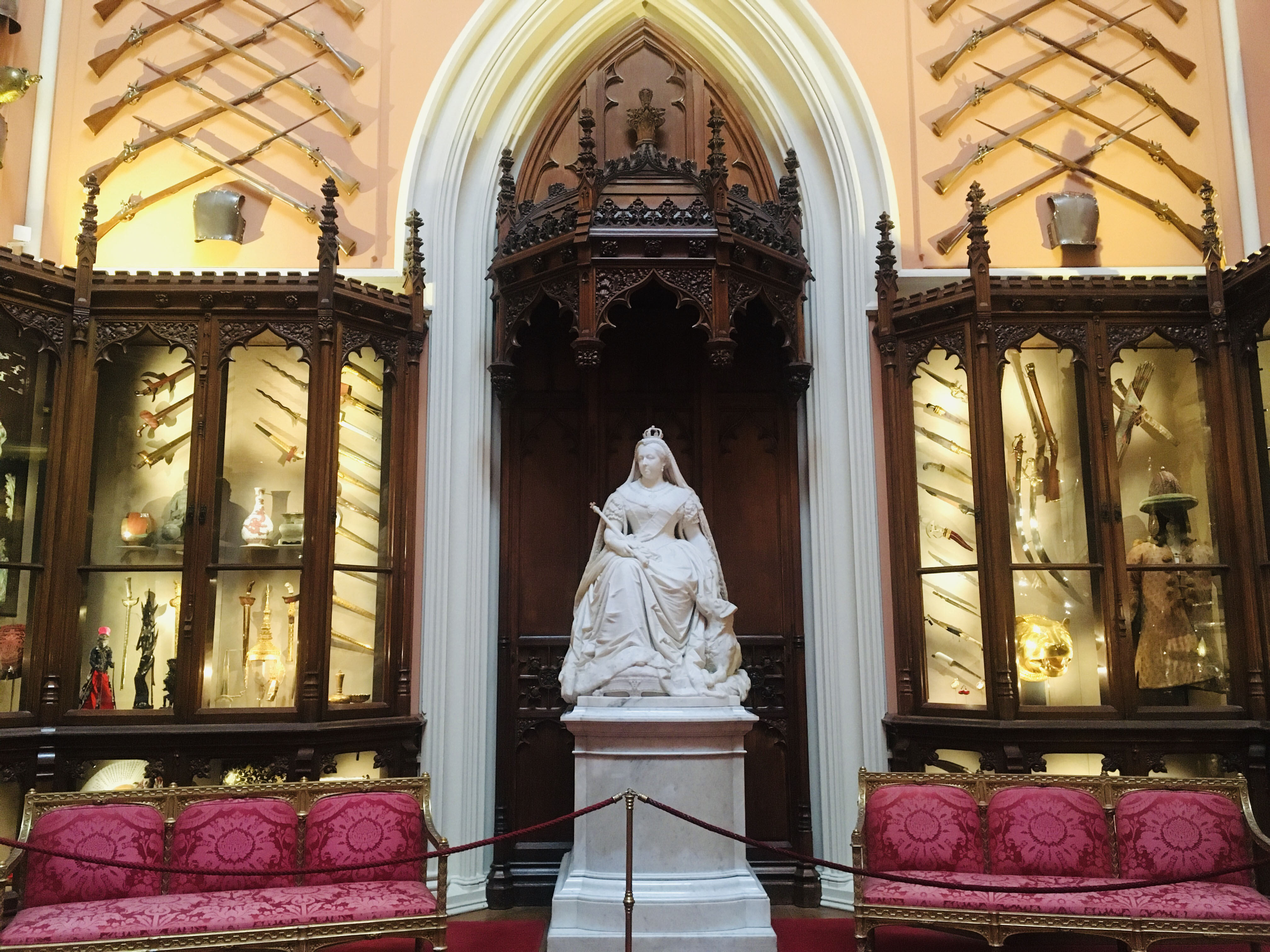
Grand Vestibule: The British Monarchy and the World
The Grand Vestibule at Windsor Castle reflects interaction between the monarchy and the wider world
Balaganda
1900-70RCIN 70073
Balaganda were traditionally worn attached to a belt by Brazilian women on feast days and holy days. They incorporate trinkets made from materials such as gold, silver, coral, wood, iron and bone. Many of the forms have symbolic significance, and the balaganda as a whole might be worn as an amulet or spiritual defence, or as a love token.
The pieces here include an articulating fish, a tambourine, a sandal, a pomegranate and other fruits. A scarab tooth is a symbol of love, since when ground to powder it acts as an aphrodisiac. The ivory horn is a charm for good luck, and the fruits indicate a desire for abundant food. The gold ring (pente) is crowned by a starfish, one of the attributes of the Inca Water Goddess, and flanked by doves which represent the Holy Ghost.
It was presented to Queen Elizabeth II by President Artur da Costa e Silva of Brazil during her State Visit to Brazil, 5–11 November 1968.







